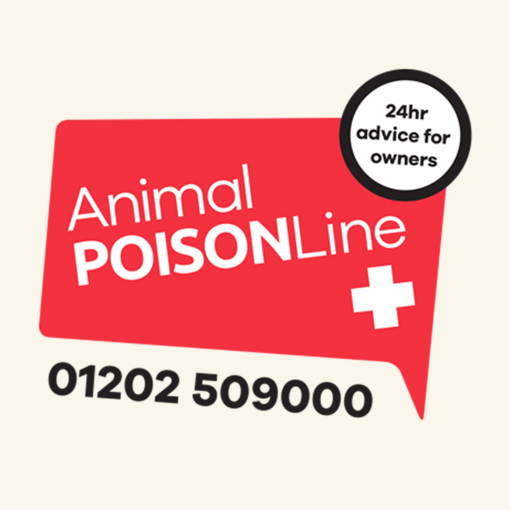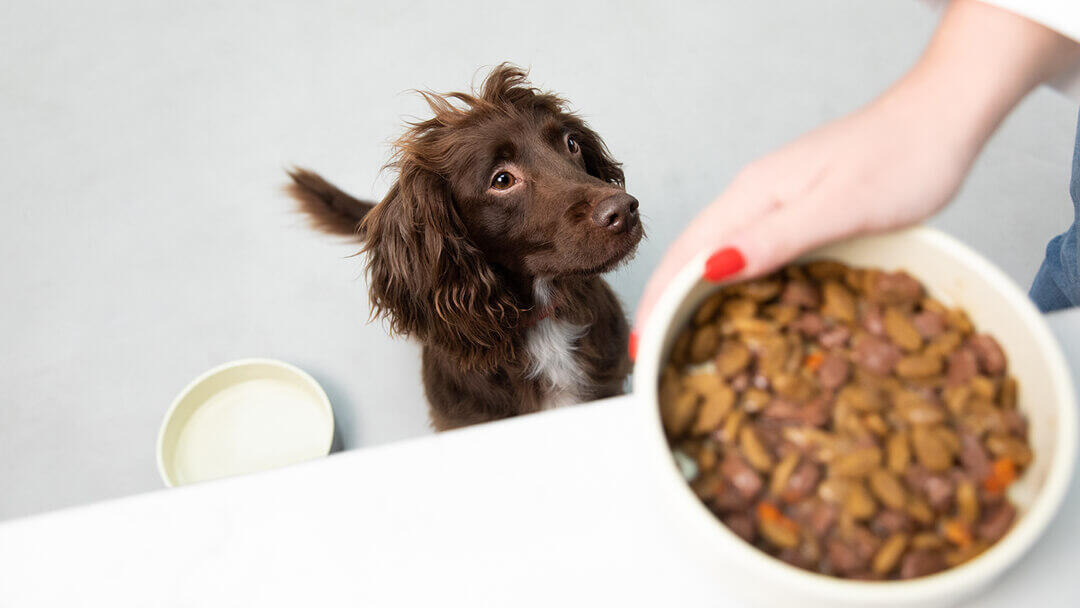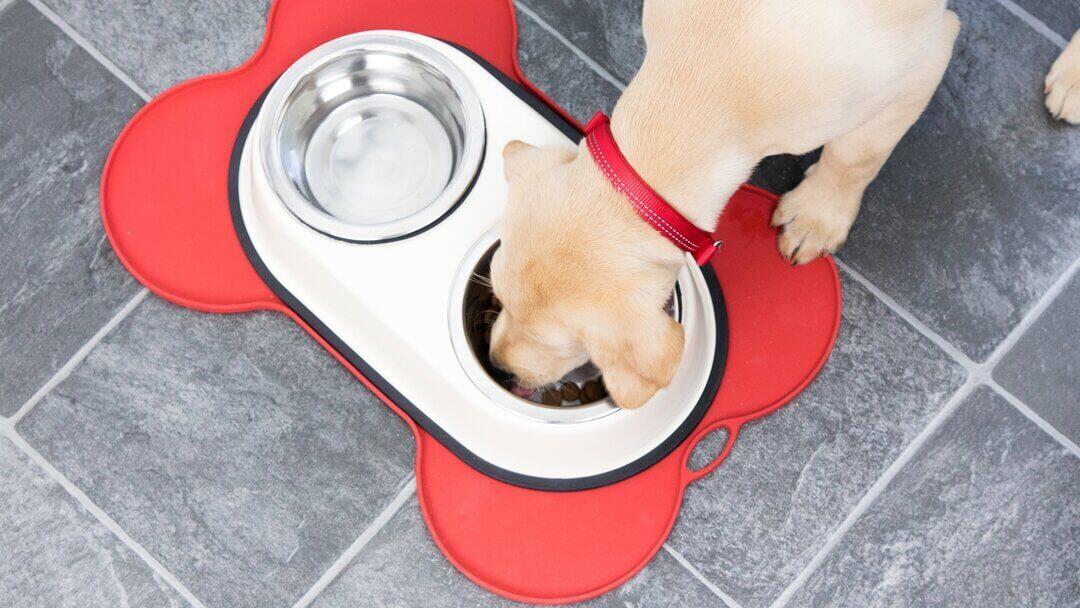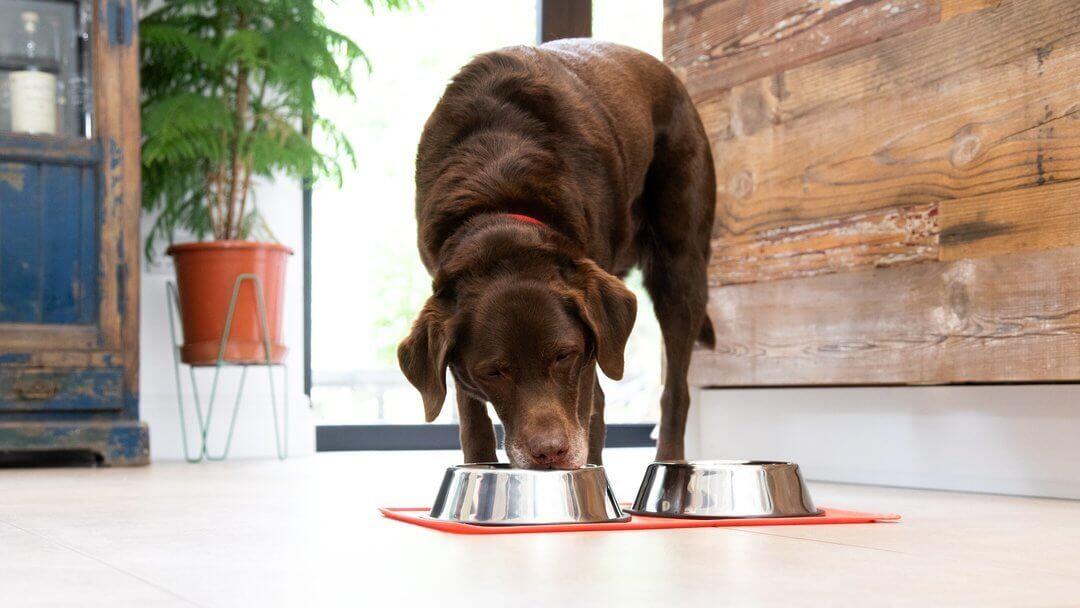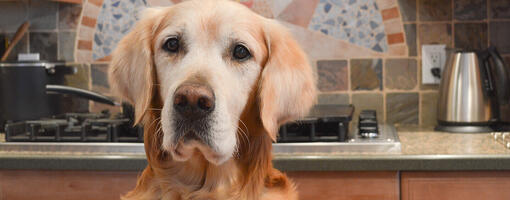
We love our dogs and only want what’s best for them, so it’s hardly surprising that interest in homemade dog food is on the up. Find out all you need to know about this topic and why it’s best to seek expert advice before starting your pet on a home-prepared diet.
Our dogs are our best friends and part of the family, so it’s only natural that we wonder if we can have them join in on our family meals – food is the way to (most) dogs’ hearts after all! But it’s not as clear- cut as just cooking an extra portion of whatever you’re having – homemade dog food can be quite tricky to get right. You’ll need to ensure that what you’re cooking meets all of your pet’s nutritional requirements. This means we advise that you don’t switch to a home-prepared diet without consulting with a vet or pet nutritionist. If you’re thinking about preparing home cooked dog food, keep reading to find out everything you need to know.
Are homemade dog food recipes healthier?
Usually not! According to the American Kennel Club many vets don’t believe that feeding homemade food is better than a diet of commercial dog food. There’s currently a lack of evidence to suggest there are any benefits of homemade dog food that dogs can’t already get from a complete and balanced dry or wet food. In fact, vets actually worry that homemade dog food can sometimes be detrimental to dogs’ health, particularly if these diets aren’t formulated properly or are created without the help of a registered nutritionist or veterinarian.
What are the possible benefits of homemade dog food?
- Allows you to have full control over your dog’s diet as you can choose what goes in.
- Home-prepared diets can aid in the management of food intolerances, as you can avoid ingredients which have caused your dog dietary issues in the past. However, there are now so many commercially prepared dog foods available for managing allergies and intolerances that you’re unlikely to need to switch to home-prepared food purely for this reason.
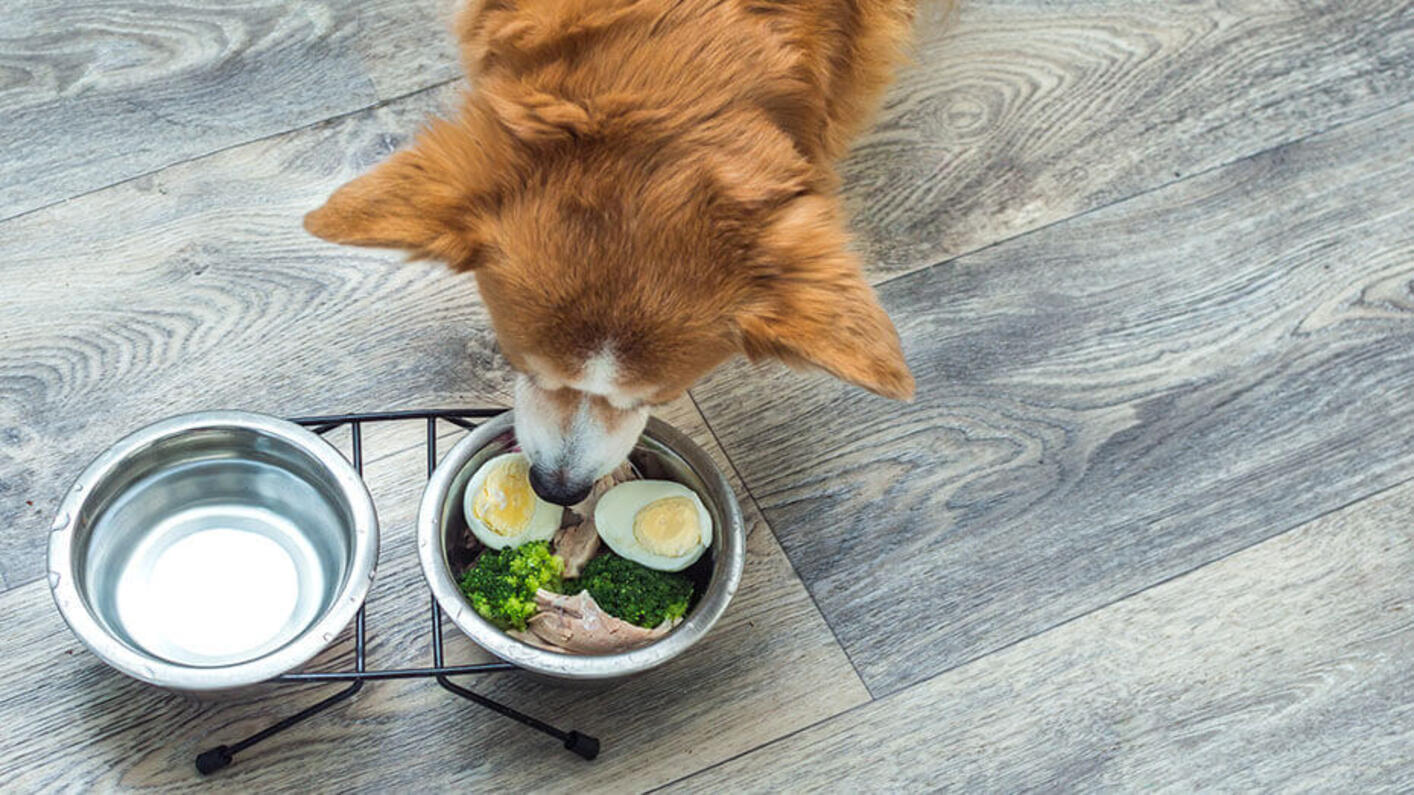
What are the risks related to homemade dog food?
- Many recipes aren’t complete and balanced and won’t provide your dog with all they need in the long run, risking health issues down the line.
- Often homemade dog food recipes aren’t made by nutritionists or vets and may have too high or low levels of certain nutrients– both of which can be dangerous.
- Sometimes it’s tempting to switch out ingredients in recipes for others if you don’t have a particular ingredient in your home, but doing so could unbalance the diet.
- If you use raw meat or eggs, there’s the risk that your dog could pick up certain parasites or become infected with bacteria such as Salmonella. There’s also the risk that these bacterial infections could pass to humans through handling the food or cleaning up after your pet.
- It’s difficult to judge portion sizes, meaning that dogs fed on home-prepared diets are often over- or under-fed.
With the above points in mind, if you decide to go down the homemade food route, we strongly advise that you consult a vet or dog nutritionist to ensure that the diet is suitable to keep your pet healthy in the long term. Additionally, we only recommend trying food recipes that have been specially formulated by a professional with clear, industry-recognised accreditations. Remember, anyone on the internet can claim to be an expert – make sure you research the authors carefully.
What should a homemade dog food recipe contain?
Much like with us humans, there’s a number of essential nutrients your dog needs to thrive, including protein, fat, carbohydrates, fibre, and essential fatty acids. As well as these, dogs have requirements for a whole host of micronutrients such as vitamins and minerals. However, it’s not enough for the food to contain all the right nutrients – they also need to be in the right balance. This is why meeting the nutritional requirements of dogs is so difficult and why we only advise formulating a homemade diet with professional help.
What ingredients should you avoid in homemade dog food?
There’s a vast number of human foods which should never be fed to dogs. Here’s a list of ingredients you should avoid in your recipe:
- Onions, garlics and chives: these can cause gastrointestinal problems and damage to red blood cells.
- Chocolate: this contains theobromine which is very toxic to dogs, causing gastrointestinal upsets as well as heart problems and central nervous system toxicity.
- Macadamia nuts: these contain toxins which can affect your dog’s muscles and nervous system.
- Avocado: these can cause vomiting and diarrhoea and they contain Persin which has been linked to heart problems.
- Xylitol: this is an artificial sweetener often found in peanut butter which can cause hypoglycaemia and potentially liver damage.
- Alcohol: this is incredibly dangerous to dogs, even in small doses. Alcohol toxicity can cause sickness, diarrhoea and incoordination, and in more severe cases seizures and coma can develop.
- Cooked bones: these can cause choking and can easily splinter and puncture your dog’s gut
- Grapes and raisins: these are highly poisonous to dogs and can cause severe liver damage and even kidney failure.
For more information on poisonous foods for dogs, check out our guide.
Can dogs eat homemade food every day?
The answer is yes, dogs can eat homemade food every day, as long as you consult with a veterinary nutritionist to make sure your pet is being fed the correct balance of vitamins and nutrients they need. Dogs’ dietary requirements are complex and planning a home prepared diet is not as simple as it might seem; even adding supplements can be dangerous if your dog ends up with too much of some nutrients. It’s always best to discuss this with a certified veterinary nutritionist who can guide you in formulating a well-balanced homemade diet plan.
Is it cheaper to make your own dog food?
Considering the price of ingredients, as well as the effort and time that goes into preparing it, making your own dog food can turn out to be more expensive compared to simply feeding commercial dog food options. However, it can be done. The costs will depend on many factors including the quality of the ingredients you use, the portion sizes required for your dog, any specific dietary needs, and the cost of supplementing with additional ingredients to ensure a balanced diet.
Additional considerations with homemade dog food
As mentioned previously, making a balanced and healthy home cooked dog food can be very complex and there are a number of considerations you’ll need to factor in when preparing your dog’s diet.
If your dog has any specific health problems, you’ll need to factor in the nutritional management of these. For example, if your dog is overweight, the fat content of the diet should be reduced to reflect this.
Depending on your recipe, you may need to add in certain supplements. Your veterinary nutritionist will be able to advise on these.
Don’t forget that there are also no feeding guidelines with home cooked dog food, so you’ll need to work out exactly how many calories your dog needs per day, depending on their energy levels, breed and weight. Overfeeding is a risk with homemade meals, so make sure you’re calculating portion sizes correctly for your dog. Again, your nutritionist should be able to help with this.
Despite the rise in popularity of raw diets, our vet team recommend against them as raw meat carries a risk of infection with bacteria or parasites that could make your dog very sick. We always recommend cooking meat before offering it to your dog. Read our full guide on raw diets for dogs here.
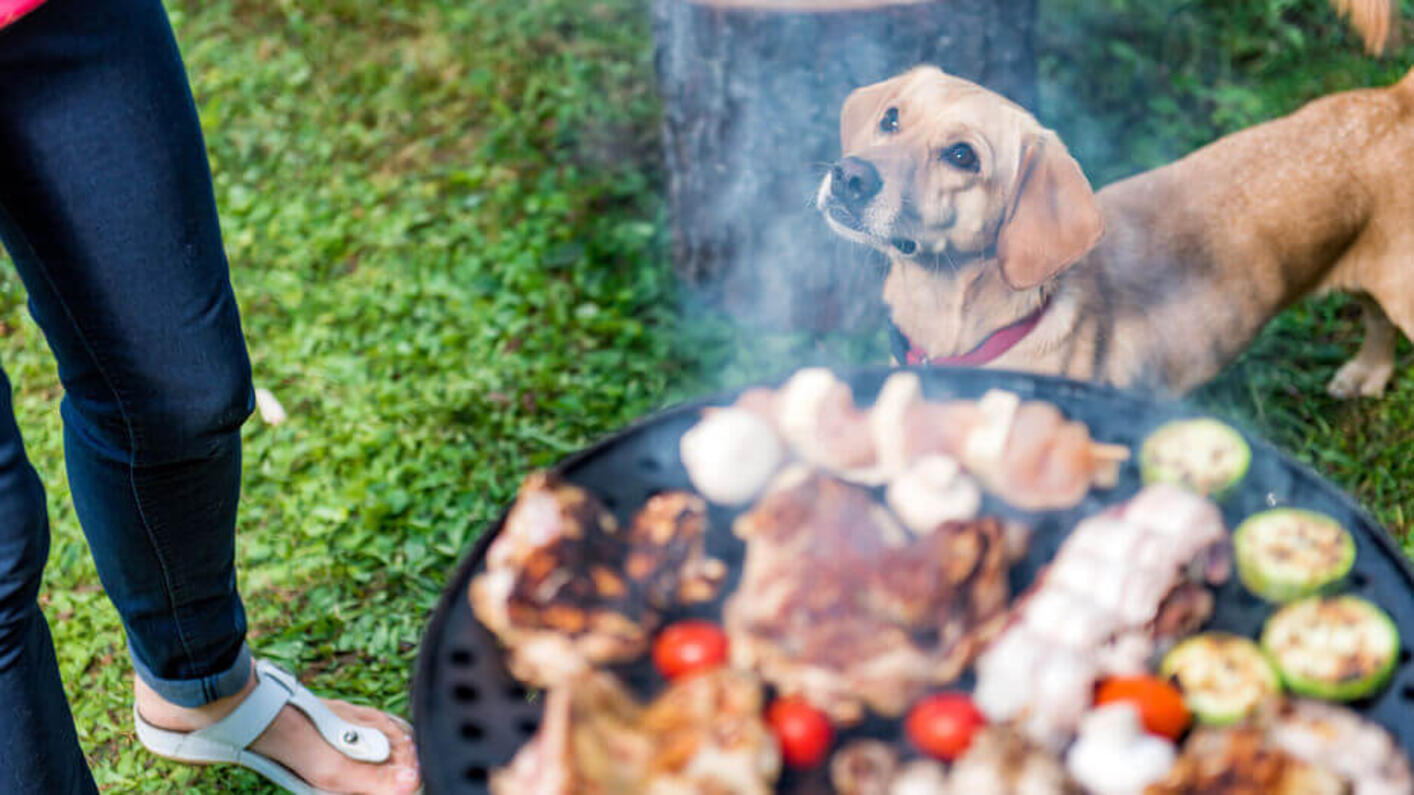
If you’re feeding homemade dog food, it’s a good idea to schedule in regular vet visits to ensure your canine companion is getting all they need from their diet. Your vet can check that your dog’s health and wellbeing is in tip- top condition and that they’re not losing or gaining too much weight. Book an appointment a few weeks after you start feeding, then schedule a regular check-up – perhaps twice a year, depending on your vet’s advice.
It’s important to understand just how difficult it is to create a homemade diet that’s complete and balanced, and it can also often be costly. If you want to avoid the headache, it’s a good idea to choose to feed a high-quality commercial diet instead. Not only is this far easier, it will also allow you to be safe in the knowledge that your dog’s getting everything they need to thrive.
Looking for more expert feeding advice for your dog? Check out our guide on healthy dog treats for training, next.



